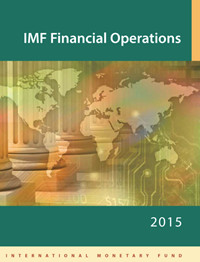Related Links
Email notification sign-up

IMF Financial Operations 2015
October 2015
The IMF Financial Operations 2015 provides a broad introduction to how the IMF fulfills its mission through its financial activities. It covers the financial structure and operations of the IMF and also provides background detail of the financial statements for the IMF's activities during the most recent financial year. This publication (currently in its second edition) updates a previous report entitled Financial Organization and Operations of the IMF, first published in 1986 and last issued in 2001 (the sixth edition). That 2001 report reflected the seismic shifts in the global economy and in the IMF's structure and operations that occurred after the fall of the Soviet Union and the various currency and financial crises of the 1990s. This revised and updated report covers more recent developments, including measures taken in response to the global financial crisis of 2007–09 and the institutional reforms aimed at ensuring that the IMF's governance structure evolves in line with developments in the global economy, measures to enhance the financial safety net for developing economies, as well as reforms to the IMF's income model.
Contents
Preface
This publication provides a broad introduction to how the IMF fulfills this mission through its financial activities. It covers the financial structure and operations of the IMF and also provides background detail of the financial statements for the IMF’s activities during the most recent financial year. Making such financial information publicly available is part of the IMF’s overarching commitment to transparency. Transparency in economic policy and the availability of reliable data on economic and financial developments are critical for sound decision-making and for the smooth functioning of the international economy. Toward that end, this publication also contains numerous links to other publicly available information on IMF finances, including on the IMF’s website, www.imf.org.
Chapter 1 reviews the evolution of the IMF’s financial structure and operations, its role and functions, governance structure, and the nature of recent reforms. Chapters 2 and 3 explain how the IMF provides lending to member countries experiencing actual or potential balance of payments problems, meaning that the country cannot find sufficient financing on affordable terms to meet its net international payments (for example, for imports or external debt redemptions). This financial assistance enables countries to rebuild their international reserves, stabilize their currencies, continue paying for imports, and restore conditions for strong economic growth, while undertaking policies to correct underlying problems. Chapter 2 reviews IMF lending made at market rates (that is, nonconcessional lending facilities), and Chapter 3 describes the various concessional facilities by which the IMF lends to low-income member countries at favorable rates (currently, a zero interest rate). Chapter 4 reviews the SDR mechanism; Chapter 5 outlines the sources of income for the IMF; and Chapter 6 outlines the institution’s approach to financial risk management. The publication also includes a list of common abbreviations, a glossary, and an index.
















